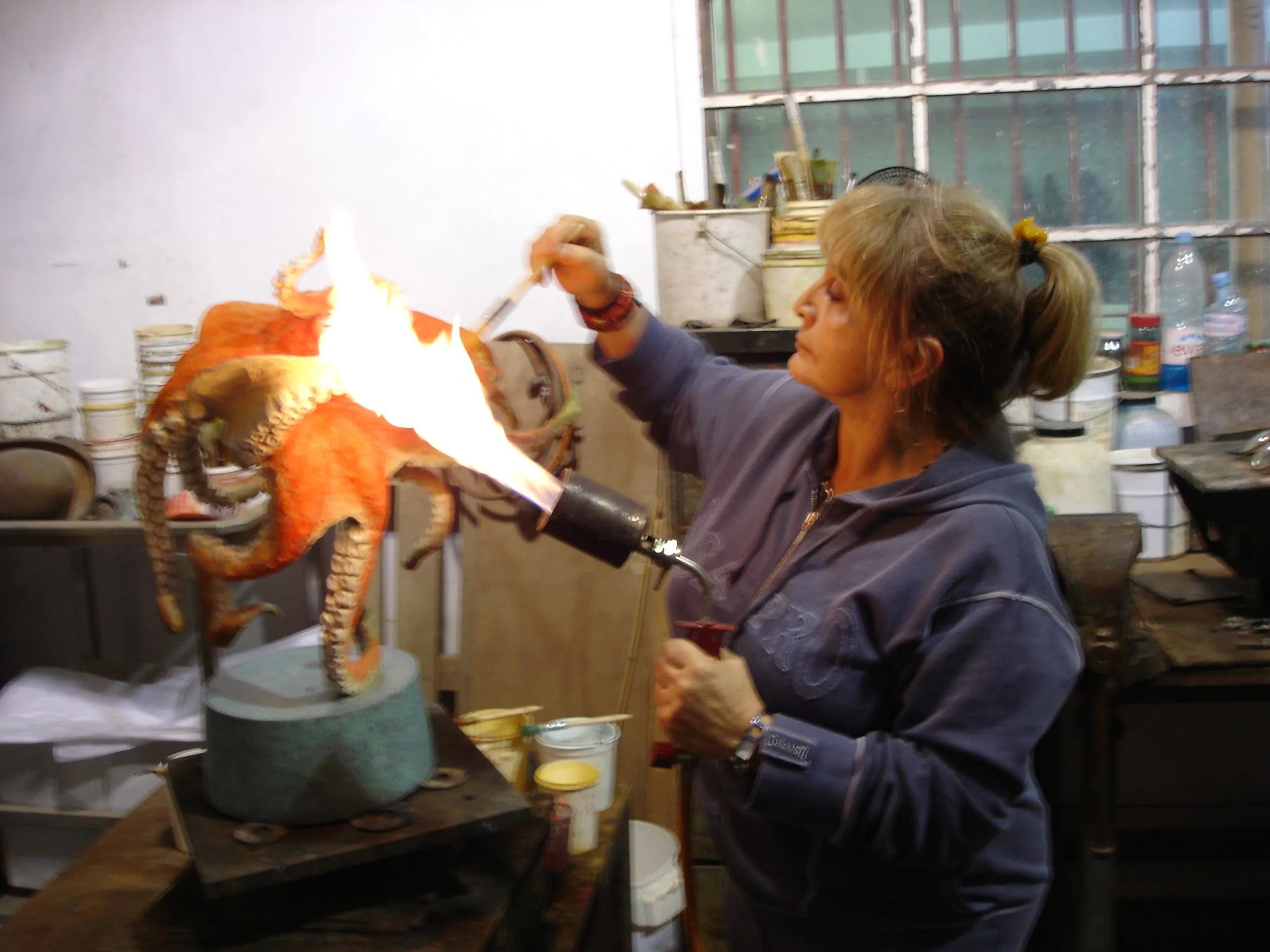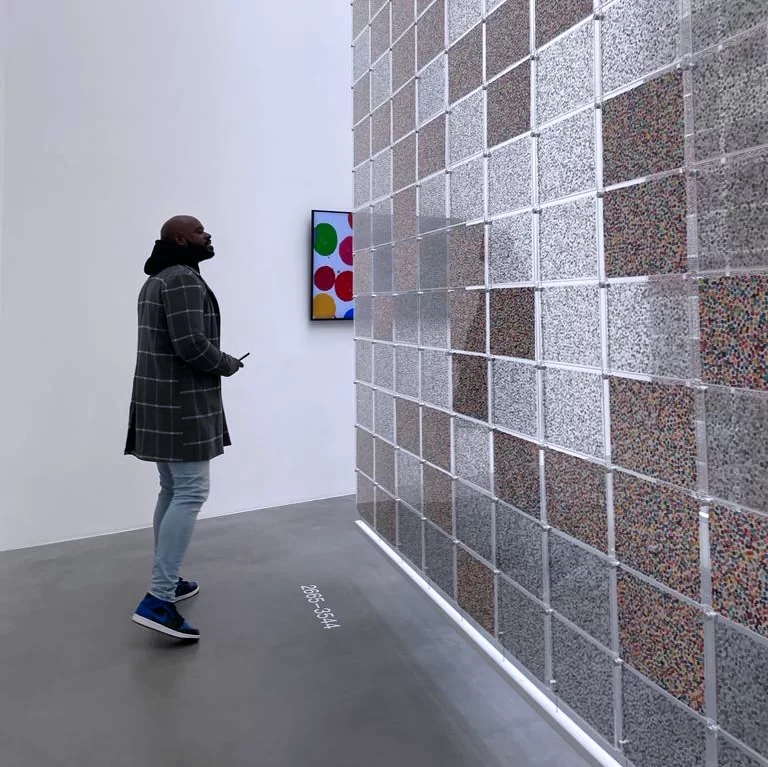Raised across continents and guided by masters, Bushra Fakhoury, the British-Lebanese sculptor, turns myths, humour and raw conviction into monumental forms of solidarity
On a warm summer afternoon, over seven-step chakra tea at her son’s Mandrake Hotel — a lush, art-filled oasis in the city — Bushra Fakhoury reflected on the restless journey that has shaped her life, work, and ultimately her practice. Born in Lebanon and raised between Beirut, the Ivory Coast, and France, she began sculpting as a child in a Catholic convent, fashioning flowers and animals out of marzipan.
That early act of play became a lifelong practice, one that now spans monumental bronzes, delicate ceramics and playful assemblages of objects rescued from street markets.
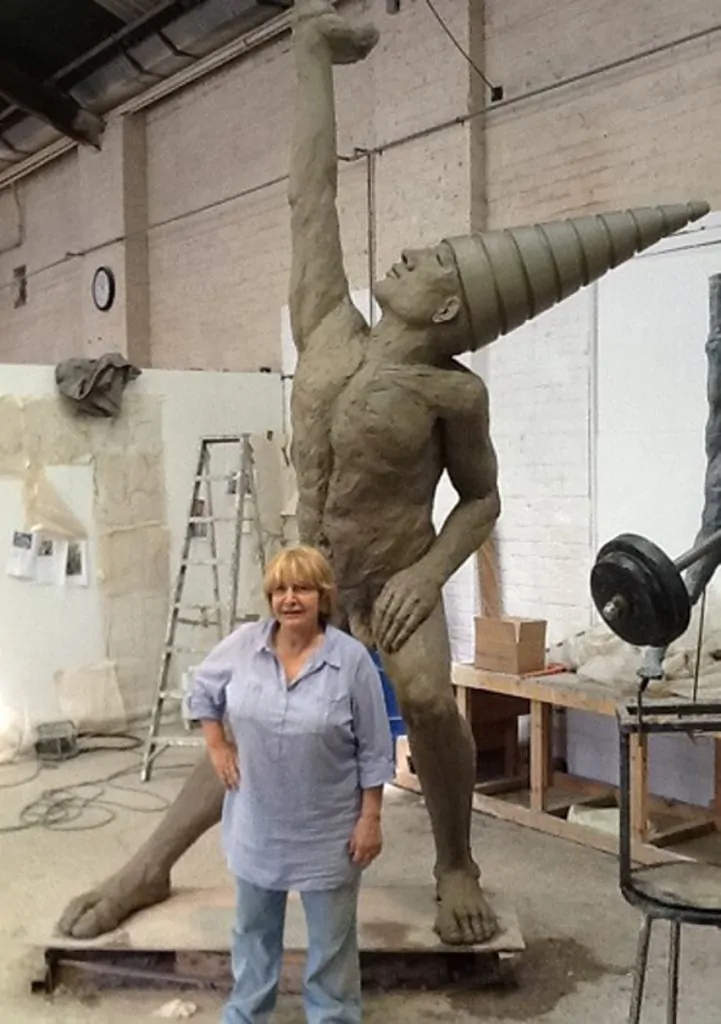
Courtesy of the artist
In my work, power comes from the way I express an idea. The sculpture Dunamis, for instance, meaning “power from above,” conveys a message about saving endangered species.
Bushra Fakhoury
Fakhoury speaks with the candour of someone who has lived across continents and refuses to separate life from art. “Everything begins here, in my head,” she explained of her instinctive, sketchless process — ideas arriving in dreams or sparked by something as ordinary as a sandwich, then realised at scale with a single knife and her own momentum. She approaches balance in her towering works with what she calls “common sense”, though she admits that she seeks to push forms to the edge, as if echoing her belief that “life itself is on the edge”.
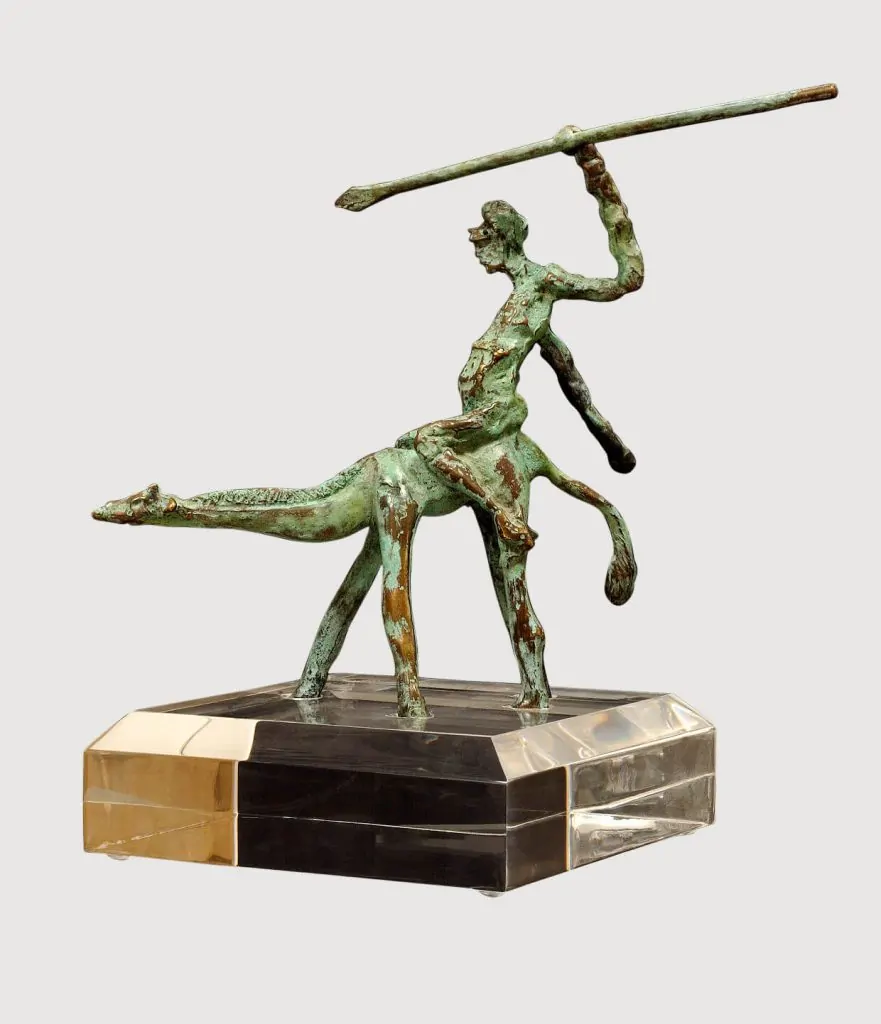
H18cm x W16cm x D9cm
Bushra Fakhoury
Courtesy of the artist
If humour and spontaneity drive her process, her sculptures are also charged with moral urgency. She has crushed bullets in bronze to speak against war and stripped her dancing figures bare to critique materialism. “The mask,” she said of one work, “shows how we hide, though underneath we are all the same.” For Fakhoury, art is not only form and material but a call for solidarity — an insistence, born of a childhood that spanned cultures and a family that spans faiths, that the world is one.
You’ve lived across continents — Beirut, the Ivory Coast, France, Kenya and England. How have these shifts in geography and culture imprinted themselves on the textures, forms and symbols that recur throughout your work?
Bushra Fakhoury: My personality is built not only by my upbringing but through my travels ,meetings with people from different cultures – I have always tried, wherever I go, to learn the language, because it is good to communicate with people, and it shows respect at the same time. It has also enriched my personality, giving me many different facets shaped by various countries and people.
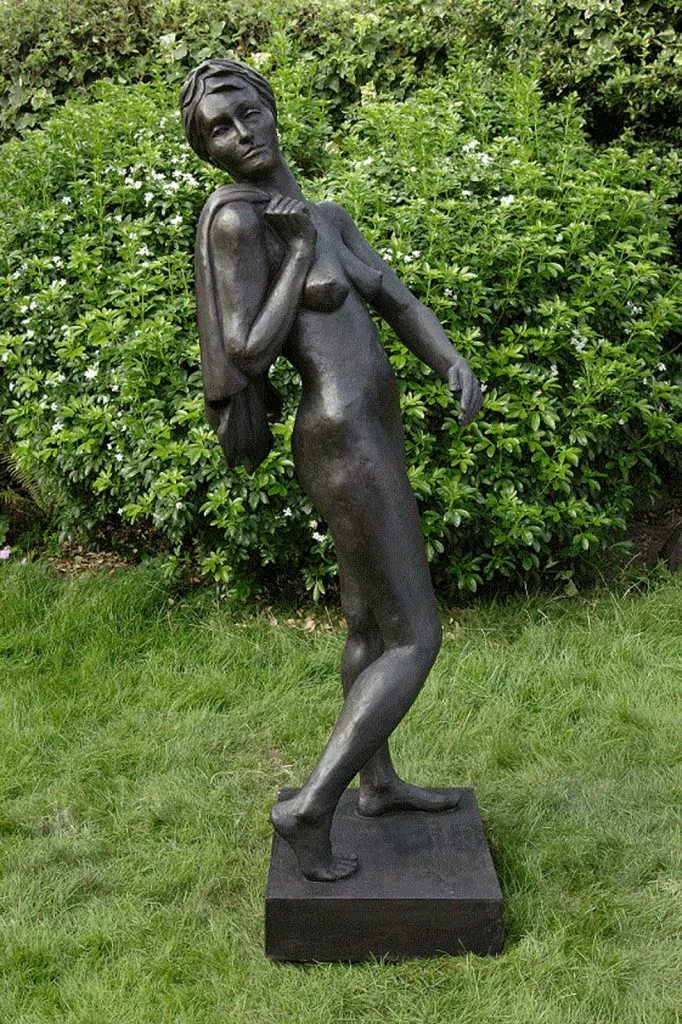
Bushra Fakhoury
Courtesy of the artist
That is why, whatever I cannot express in words, I express through my sculpture – and people respond to it. So, when people ask me to talk about my work, I say it should speak for itself, though a little explanation is fine.
Your art draws deeply from myths, fables and folklore. Do you see these tales as fixed inheritances, or as living narratives that transform in response to the urgencies of the present?
Bushra Fakhoury: When I first started working, I was influenced by myths, mythology. But as I began engaging with underprivileged people and witnessing the problems of the world, my focus shifted. Now, my work is mainly about society and people – the psyche, what they should and should not do, particularly through education and vocation.
You work without preliminary sketches, embracing the risks and freedoms of spontaneity. Can you recall a moment when this instinctive approach led to an unforeseen breakthrough in your practice?
Bushra Fakhoury: My most notable breakthrough from this spontaneous approach was the sculpture Dunamis. The idea wasn’t planned; it was a sudden, flash of insight. This freedom
from preliminary sketches allowed the piece to develop organically, revealing possibilities I couldn’t have anticipated with a more controlled process.
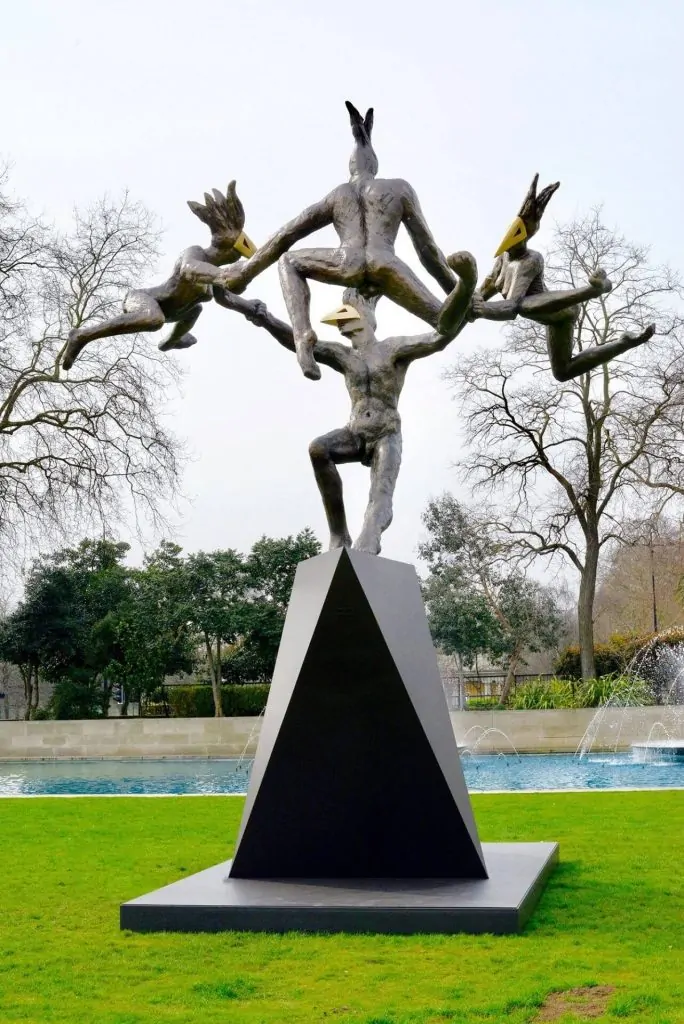
Bushra Fakhoury
Courtesy of the artist
This kind of spontaneity is where my most unexpected and significant artistic breakthroughs
happen. My work begins in my studio on a small scale, but the real transformation happens at
the Castle Fine Art Foundry in Liverpool. There, my sculptures are enlarged, first to a meter, then to monumental heights of eight or even twelve meters using a pantograph.
Once the metal skeleton is built and the scaffolding is in place, the clay is brought to me. I work straight away; the form of an elephant or a human figure is already complete in my mind.
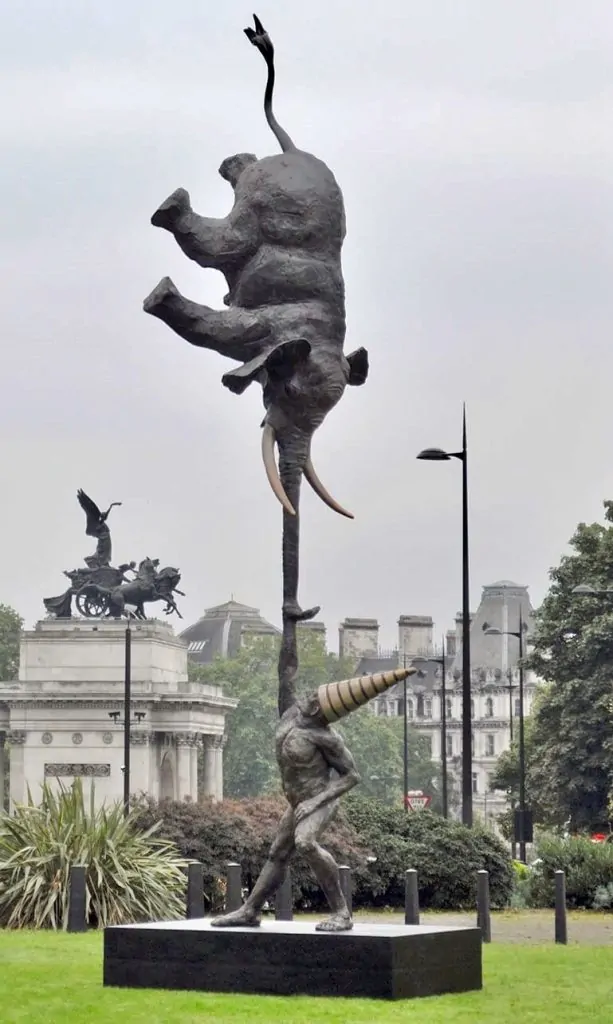
Bushra Fakhoury
Courtesy of the artist
Dunamis stands as a towering feat of balance and strength, yet it is also a meditation on compassion and solidarity. How do you navigate the delicate interplay between fragility and power in your sculptures?
Bushra Fakhoury: In my work, power comes from the way I express an idea. The sculpture Dunamis, for instance, meaning “power from above,” conveys a message about saving endangered species. By placing the elephant upside down, balancing on its trunk, I wanted to show that the impossible is possible.
With the sculpture Dance Gwenedour, I sought to represent solidarity. By leaving the figures unclothed, I wanted to convey that unity among people is not dependent on material possessions. The different masks on the figures signify our various personalities, but they don’t prevent us from sharing love and peace.
As for balance, it comes to me instinctively. People often ask if I’ve studied architecture or engineering, but it’s simply a natural intuition. I always want my work to be on the edge, perhaps because life itself is so precarious.
Bushra Fakhoury: TRANSMUTE opens on the 7th of October, 2025 until the 11th of October, 2025 at Mall Galleries’ North Gallery
©2025 Bushra Fakhoury


